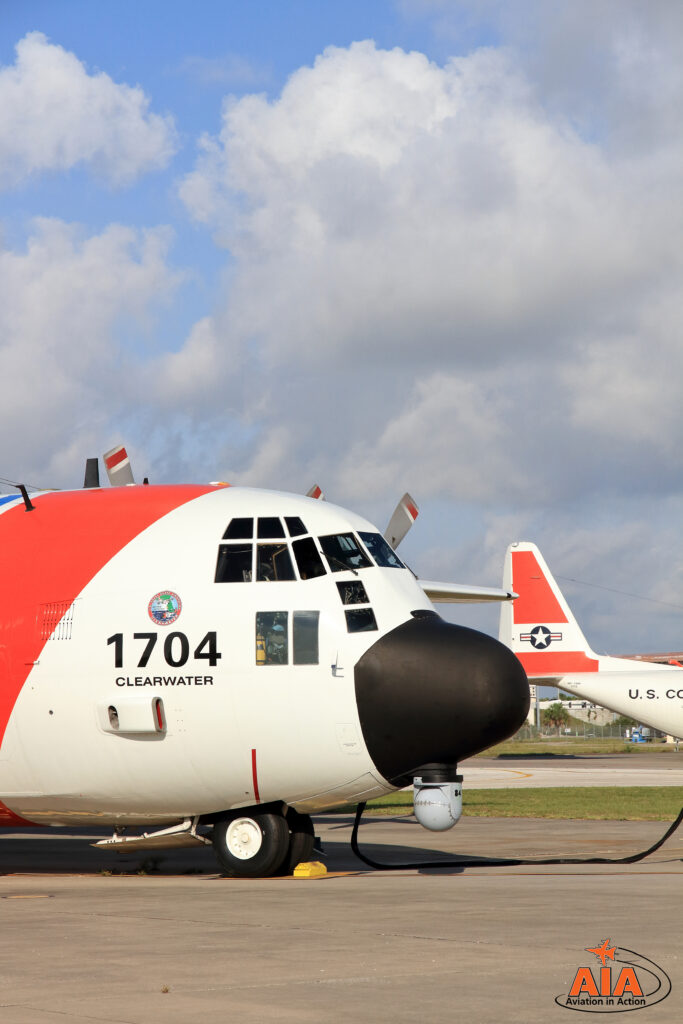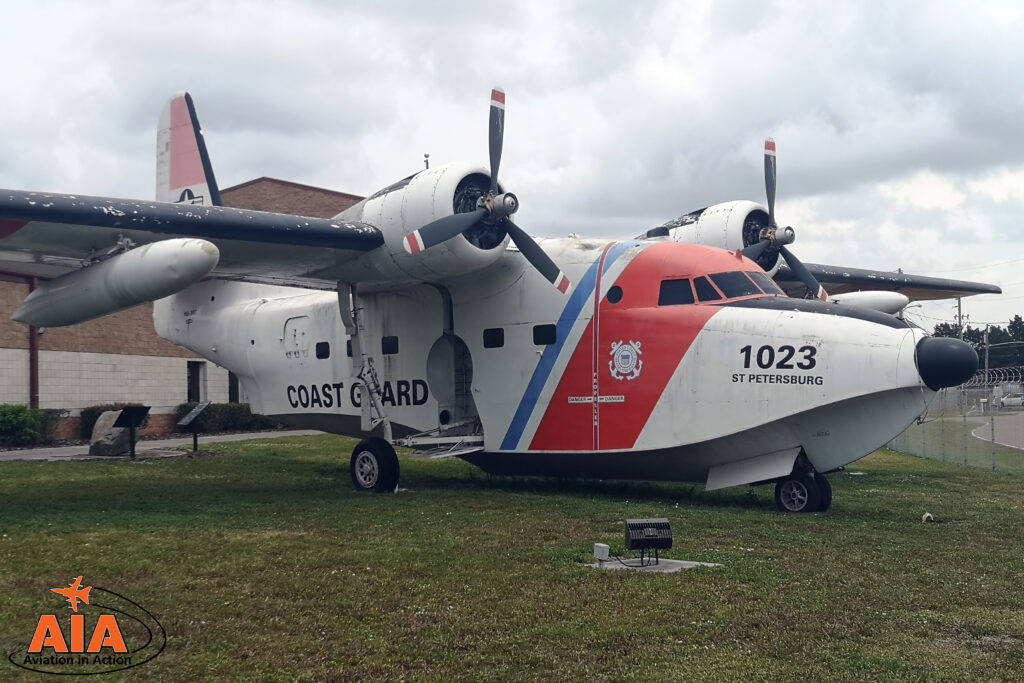“Mayday. Mayday. This is the fishing vessel “Right Stuff”. We are taking on water and sinking, request immediate assistance”
70 miles off the coast of Florida into the Gulf of Mexico, a fishing boat is taking on water. The four person crew have donned their life jackets and jumped into the life raft. They are floating in the open ocean, alone. But they have a guardian angel, the men and women of the United States Coast Guard Air Station Clearwater. These highly trained personnel stand ready 24 hours a day, 365 days a year, to assist those in need at sea and protect the waters around the United States.
After picking up the EPIRB (Emergency Position Indicating Radio Beacon) signal from the sinking vessel, a Sikorsky MH-60T Jayhawk helicopter is dispatched to rescue the fishing boat crew. Moments later, they are successfully winched to safety on board the helicopter, another 4 lives saved.
Located at the St. Petersburg-Clearwater International Airport in Clearwater, Florida, Coast Guard Air Station Clearwater is the largest and busiest Air Station in the United States Coast Guard. It is home to nearly 700 USCG aviation and support personnel and, as of March 2021, hosts ten MH-60T Jayhawk helicopters and four HC-130H Hercules aircraft
In addition to serving the local area, CGAS Clearwater has an Area of Operations which includes the Gulf of Mexico, the Caribbean basin and down into the Bahamas. They also have a number of C-130s deployed in support of Joint Interagency Task Force (JIATF) operations in the Caribbean.
On top of maintaining an operational Search and Rescue readiness from their home base, fixed-wing and rotary aircraft from CGAS Clearwater are deployed to a number of locations in the Bahamas and Caribbean. These aircraft take part in anti-drug and migrant smuggling operations, as well as providing search and rescue cover.
Air Station Clearwater aircrews fly over 400 Search and Rescue cases each year covering both the east and west coasts of Florida, the Bahamas, and beyond.
The air station’s motto is “Anytime, Anywhere”.
CGAS Clearwater can trace its roots back to 1934, when an air station was commissioned at Albert Whitted Airport in downtown St. Petersburg. This station was initially designated as Coast Guard Air Station St. Petersburg.
With the impending arrival of four new Lockheed HC-130 Hercules aircraft in 1976, it was decided to move the station to a new location at St. Petersburg-Clearwater International Airport. With this move, the air station’s name was changed to U.S. Coast Guard Air Station Clearwater.
Over the following years, the air station and its fleet strength continued to expand as its area of responsibility was also increased.
On static display at the front of the air station is USCG 1023, a restored Grumman HU-16 Albatross. This aircraft represents the history of the air station when it was located in downtown St. Petersburg.
The Lockheed HC-130H Hercules is operated by the US Coast Guard in the Search and Rescue and maritime reconnaissance roles.
The HC-130H first flew on 8 December 1964, with the aircraft gradually replacing the HU-16 Albatross and HC-123 Providers. U.S. Coast Guard HC-130Hs were primarily acquired for long-range overwater search missions, support airlift, maritime patrol, North Atlantic Ice Patrol and command and control of search and rescue. USCG HC-130s also have the capability of air dropping rescue equipment to survivors at sea and can be used to transport equipment to forward bases.
To increase the aircraft’s range the HC-130H is fitted with underwing fuel tanks, giving the aircraft a mission endurance of up to 14 hours. Over the coming years, the Coast Guard will replace the entire HC-130H fleet with the newer HC-130J Super Hercules.
It is common to see HC-130H Hercules aircraft working in tandem with other Coast Guard boats and helicopters. Utilising the aircraft’s speed, height and range the Hercules is able to search a larger area more quickly, thus it is able to direct the other rescue units directly to the scene.
The Sikorsky MH-60T Jayhawk is one of the two types of helicopter operated by the United States Coast Guard. It is primarily used for search and rescue, law enforcement and marine environmental protection missions.
The Jayhawk entered Coast Guard service in June 1990 replacing the ageing HH-3F Pelican and is based on the same airframe as the United States Navy’s SH-60 Seahawk helicopter. A total of 42 MH-60Ts are in service with the Coast Guard.
The MH-60T has a cruising speed of 135-140 knots, and has an endurance of six to seven hours.
The helicopter is fitted with a glass cockpit and an enhanced electro-optic/infrared sensor system, allowing it to operate in all weathers and at any time day or night. Built into the nose of the Jayhawk is a search and weather radar and mounted under the nose is a Forward Looking Infrared (FLIR) turret.
Mounted on either side of the fuselage are three 120 gallon (US) fuel tanks with two on the port side and one on the starboard. There is also a rescue hoist mounted above the starboard door, which holds 200 ft. (61.0 m) of cable.
From 2009 onwards, Coast Guard Jayhawks from Clearwater have been flying a number of drug patrol and enforcement missions. These missions are usually conducted with the support of Coast Guard Patrol Cutters.
On Saturday 25th June a 39-foot boat was struck by lightning 100 miles off Clearwater. The boat’s engine became disabled and it was adrift in the Gulf of Mexico.
The Coast Guard Command Centre received an Emergency Position Indicating Radio Beacon (EPIRB) signal and an MH-60 Jayhawk helicopter was scrambled to provide rescue. Upon arrival at the scene, the boat’s crew were able to fire flares and use their VHF radio to direct the helicopter straight to their location. The aircrew of the helicopter were able to hoist the boat’s crew of five women and two men into the helicopter without incident and returned them to the air station, where air station family members were waiting to greet them.
“Lightning storms are routinely encountered in the Florida maritime environment and can pose a significant hazard to boaters,” Lt. David McKinley, Coast Guard pilot, said in the release. “Fortunately, the boaters in this case were well prepared with all necessary safety equipment including an EPIRB, flares, and a marine VHF radio to ensure a quick and efficient rescue.”
Aviation in Action would like to extend our sincere thanks to the Public Affairs Office at Air Station Clearwater for their wonderful hospitality during our visit and we hope to have the ability to work with them again in the future. We would also like to extend our thanks all the men and women of Air Station Clearwater and the United States Coast Guard whose service to their country ensures they are ready to answer the call for assistance “Anytime, Anywhere”























